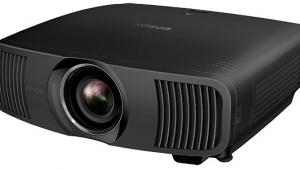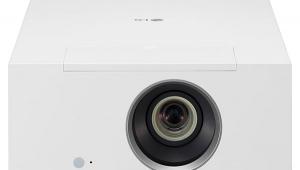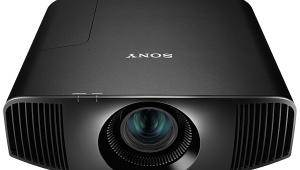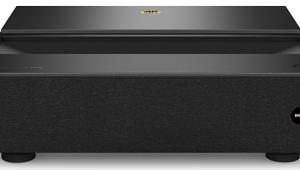Marantz VP-15S1 DLP Video Projector

Priced at $20K, the 11S1's aim was nothing short of best of the best pure performance. But the bigger trend in front projection over these last couple of years has been toward cutting corners and hitting lower price points. Enter the VP-15S1.
Announced at CEDIA 2007, the $9,999 VP-15S1 is Marantz's shot at the lower price points. Marantz decided not to cut corners and compete with the gaggle of LCoS projectors making so much noise in the $5K neighborhood. Instead, it was decided to aim at offering as much of the VP-11S1's performance as possible at a friendlier, but still not cheap price. And it succeeds spectacularly, even outperforming the Varsity PJ in some key respects at a retail price cut down by half.
Exterior- The New Boss, Same As The Old Boss
The VP-15S1 I received was finished in black, and physically indistinguishable from the VP-11S1, which was indistinguishable from the VP-12S4. Smart looking, and since it wasn't broke, Marantz didn't fix it, and there you go.
The rear of the unit features dual HDMI 1.3 inputs, although as we've noted time and again, the video enhancements this offers are vaporware for now and the foreseeable future, apart from the output of a few high-definition camcorders. The top of the unit has buttons to let you get into the menus and control everything, and a pattern button that puts a crosshatch on screen for pointing and shooting. Although many lower priced projectors are now offering shift in both the horizontal and vertical directions, and even powered shift, focus, and zoom, the Marantz' lens adjustments, including vertical (but not horizontal) lens shift, are all manual.
Mainstays from previous Marantz units include Gennum VXP processing based on the 9351 solution, which is at or near the state-of-the-art, and custom lenses by Konica-Minolta that are nothing short of excellent. This unit produced very little chromatic aberration even at the sides of the screen and the image was sharp enough that if I walked up to my 80"-wide Stewart Studiotek 130 screen (white, 1.3-gain) I could clearly see the DMD dimples on the surface of each mirror representing each pixel. Folks, those mirrors are the teensiest little things and resolving at that level, well, it pretty much doesn't get better than that.
On throw, the 15S1 will put up a 100" diagonal image (87" wide, 16:9) from range of 10.6' to just over 15.'
Design
Let's talk about some of the differences between the VP-11S1 and the new 15S1. Both are single-chip 1080p DLP projectors. Single-chip designs have advantages and disadvantages compare to their three-chip competitors. The biggest advantage is not having alignment and convergence issues to deal with in making crisp, sharp pictures. And indeed, many otherwise fine three-chip LCoS displays we've seen have performed well with the single exception being a softer image than we see from single-chip DLPs. The big disadvantage of a single-chip design is the need for a color wheel, and its artifacts. Rainbows are more or less thing of the past, but there is still something to the idea that three-chip designs are smooth and easy on the eye/brain.
Whereas the flagship gets handpicked light engines, this PJ gets engines that are more or less off the shelf. The 11S1 uses a seven-segment color wheel spinning at 6x the refresh rate, while the 15S1 spins at 5x. Fine specs, just not exactly the VP-11S1 for less money (or the soon to be released 11S2, which will add TI's latest DMD, the DarkChip4 to the 11S1's specs).

Now, the 15S1 has some nifty new features that the 11S1 did not have, and chief among these is the new dual-iris system. Marantz' PJs have always been alluring to me because they've always gone for the best blacks and contrast for dark-room movie viewing not the most top-end light output, a position that dovetails with my own viewing biases. I watch sports, but prioritize system performance around movie watching.
With that being said, the one chink in the Marantz DLP armor has been a lack of the ability to goose up the light output for watching in some room light, or for sporting events that fare well with more horsepower. While this dual-iris system doesn't feature as much adjustability as I'd like, it does offer an iris setting (3) that opens up the light output more than past Marantz PJs without washing out the image. More on the iris settings later.
Features, Functions and Setup
In keeping with a major new trend in high-end front projection, the 15S1 is ready both physically and electronically for an outboard anamorphic lens solution that allows wide aspect ratio films to be shown on a 2.35:1 screen with no black bars at the top or bottom. Typically, a masking system is used for this type of setup, so that when a 2.35:1 film is shown, the screen opens up at the sides to get a real widescreen experience, whereas watching a "scope" film on a 1.78:1 screen could more accurately be described as "short screen" since the size of the image is smaller vertically.




























































